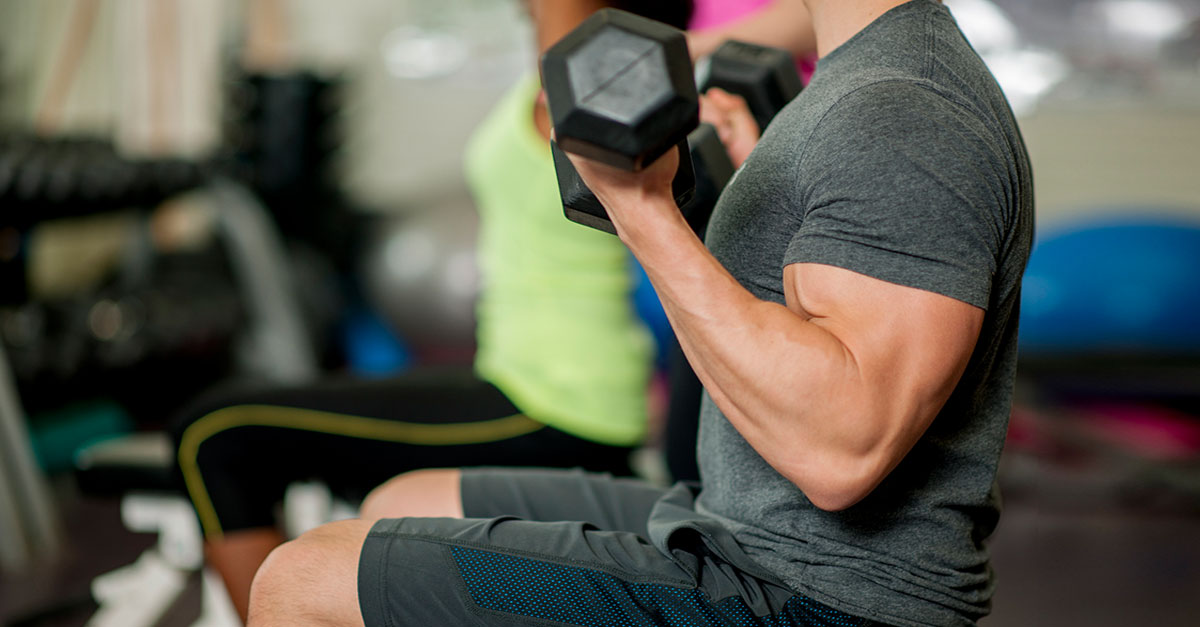You know that testosterone—often referred to simply as “T”—is the main male sex hormone, responsible for a man’s sex drive and performance. What you may not realize is that T does more than power his libido and penis.
Throughout the adult male body—in muscles (including the heart muscle)…bones…brain…and the immune system—there are receptors for vitality-giving testosterone. This means that low T doesn’t only hurt a man’s sexual wellness…it can hurt his overall health as well.
Good news: If you’ve been diagnosed with low T (see below), you can stimulate your own production of testosterone—achieving optimal, disease-preventing levels—just by making a few lifestyle modifications…
T-booster #1: Lose the belly fat. Extra abdominal fat generates the enzyme aromatase, which turns testosterone into estrogen.
What to do: The best way to shed extra pounds (especially harmful belly fat) is to stop eating refined carbohydrates such as sugar and white flour. And one of the best ways to do that is to eliminate all processed foods, most of which contain sugar and/or refined carbs. Another common source of excess carbohydrates is alcohol. If your T is low, you’re better off saying no to beer, wine and spirits.
T-booster #2: Get your shut-eye—particularly from 4 am to 7 am. The male body produces the most testosterone during these three hours, when rapid eye movement (REM) sleep usually occurs. Deep, restful sleep is essential for optimal T.
What to do: Difficulty falling asleep or getting back to sleep after waking up is often caused by worry—your mind is racing as you anxiously think about your health, your finances, your work or your relationship. To stop this unhealthy habit, keep a notebook on your night table and write down your thoughts before bed and/or if you wake up and can’t get back to sleep—make a list of what you’re worried about or what you think you need to do. Doing so will calm your mind, ease your worries—and let you fall asleep.
T-booster #3: Lift a weight. Regular exercise is a must for boosting testosterone—but it has to be the right kind of exercise. For T production, research strongly supports the use of weight-training. Here’s why: Using the biggest muscles of the body sends signals to the brain that the muscles need more testosterone—and the body starts producing more.
What to do: Deadlift a barbell or kettlebell. In this exercise, you bend over at your hips and bend your knees to lift the weight off the floor. Return to standing, hold the weight, and then put it back on the floor. Repeat this lift until your muscles are fatigued. A dead lift uniquely targets your hamstrings, glutes, core, upper back and arms.
Learn the safe, correct way to do a dead lift (including the amount of weight that’s right for you) from a trainer, exercise book or video, and then do dead lifts every other day, at least three times a week.
T-booster #4: Take targeted supplements. Some nutritional and herbal supplements are uniquely effective at helping your body produce more testosterone, preserving the testosterone your body is producing or making sure that your testosterone gets to its receptors. Men with low T should consider taking…*
Zinc, a mineral that stimulates the Leydig cells in the testicles that produce testosterone. Take 30 mg daily. Caution: More is not better. Taking more than 30 mg of zinc a day lowers copper levels, which can be harmful.
Vitamin D, which aids in the production of testosterone. The amount of vitamin D you take should be guided by a vitamin D test.
Rhodiola and ashwagandha. Stress generates the hormone cortisol, which inhibits the production of testosterone. These herbs are adaptogens, which balance the body when it is under stress. Take 250 mg of rhodiola, twice daily…and 250 mg of ashwagandha, twice daily.
T-booster #5: Make love, make T. Sex stimulates the production of testosterone and is good for the health of your prostate.
What to do: Although many factors affect sexual frequency—including the desires of your sexual partner—I recommend sex at least twice per week to optimize testosterone. Many of my patients consider this my best advice!
Important: I recommend testosterone replacement therapy only as a last resort—for men whose T is so low that lifestyle changes don’t adequately improve their levels and whose low testosterone is causing or complicating a chronic condition. In 99% of my patients, the right lifestyle changes do the trick.
DO YOU HAVE LOW T?
A clinical diagnosis of low testosterone is made when the level of a man’s total testosterone, as measured by a blood test, is 299 nanograms per deciliter (ng/dL) or lower. But an optimal level of total testosterone is 600 ng/dL to 800 ng/dL. Anything below 600 ng/dL puts you at risk for health problems and a lower quality of life. If you answer “yes” to one or more of these questions, ask your doctor for a blood test to measure your “total testosterone” level to see if you have low T…

- Do you have extra belly fat? Abdominal fat is linked to low T.
- Do you feel tired all the time? Daytime fatigue is a common symptom of low T.
- Do you feel a lack of motivation—at work, in relationships and in your personal interests? Low T can make you apathetic and indecisive.
- Are you a man in your 60s or 70s who feels that you just don’t have the vitality and positivity you once had? If so, you may have low T.
- Do you have little desire for sex—and when you try to have sex, do you have trouble achieving an erection? Those are each signs of very low T.
*When considering the use of herbs and supplements, consult a naturopathic or functional medicine doctor for advice on dosage and potential interactions with medications. To find such a doctor near you, consult The American Association of Naturopathic Physicians, Naturopathic.org, or The Institute for Functional Medicine, IFM.org.


